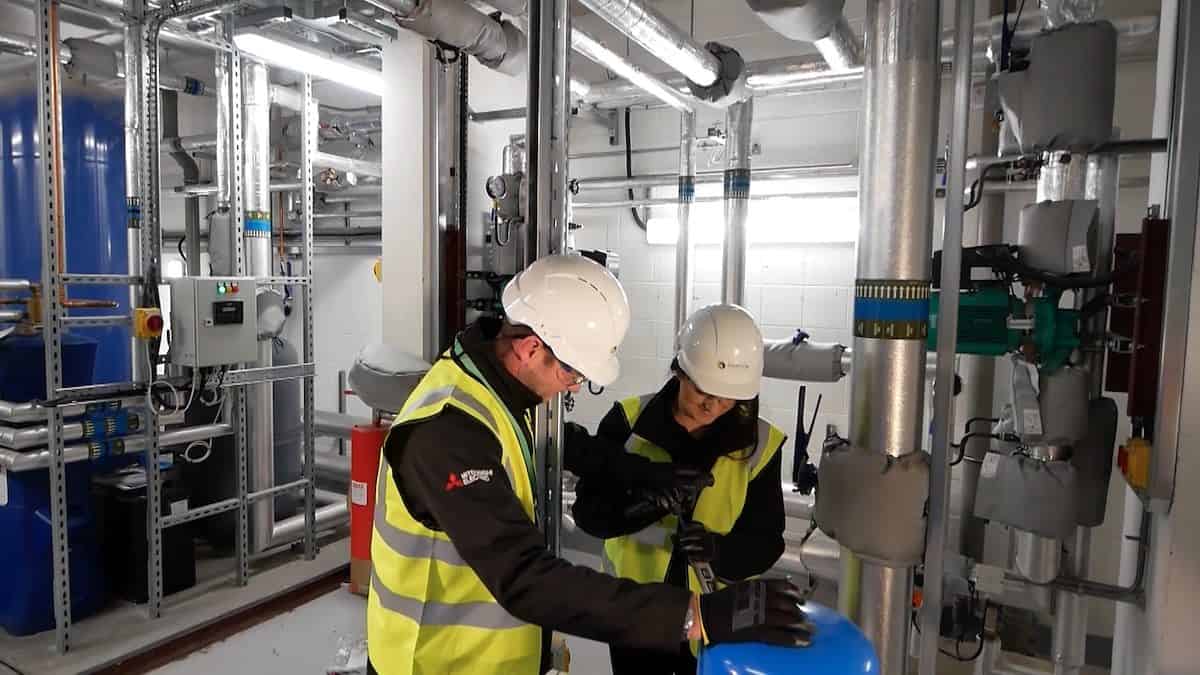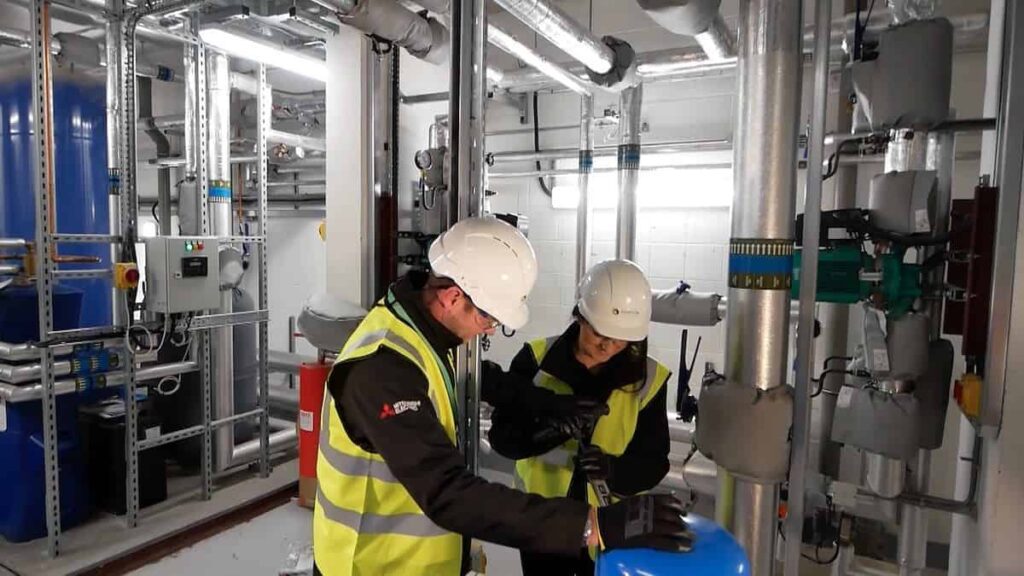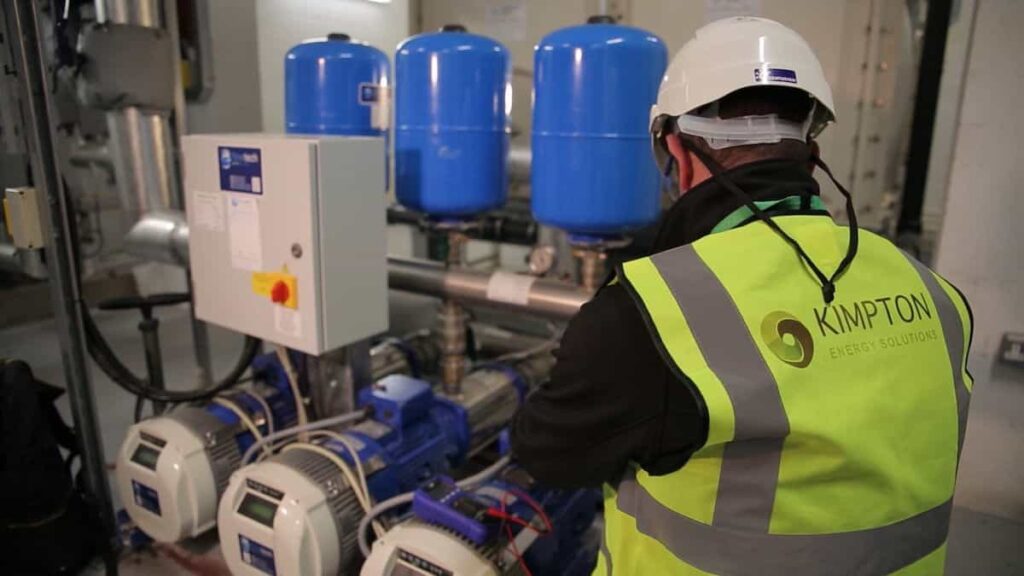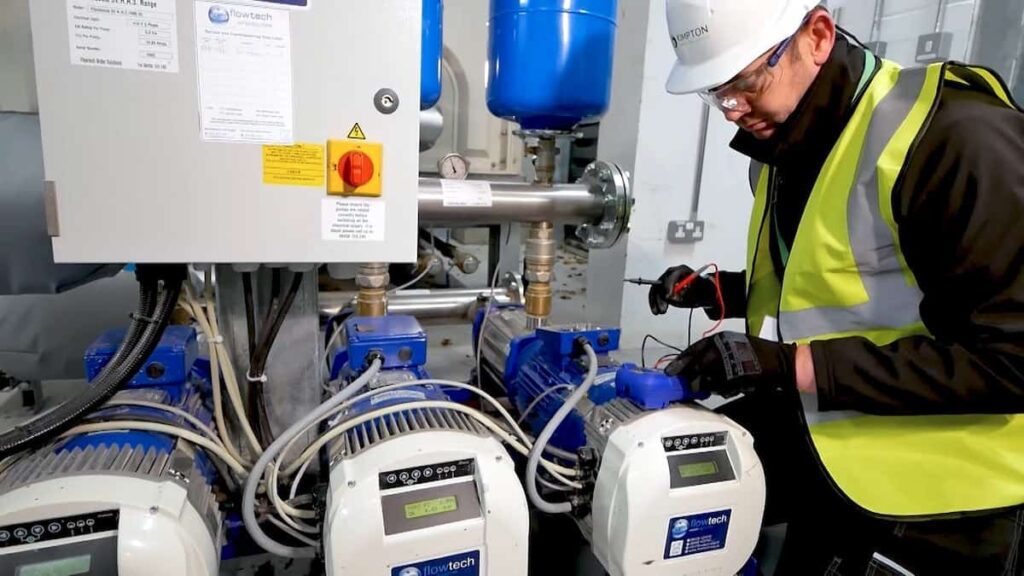
In this post, we will look at some of the options open to you when considering a Plant Room Refurbishment. We’ll look at the financials and the choices you face.
The technology available within a plant room has changed dramatically over the last 20 plus years. We see many that still have older commercial boilers built from cast iron. Newer condensing boilers are generally designed to last between 15-20 years with regular servicing. Our service engineers tell us that whilst they are often still called out to service boilers approaching 30 years old, there are few that are delivering heat at anywhere near the efficiency of a modern boiler system. They are working, but they are not working efficiently.

An older cast iron boiler will normally operate with an efficiency as low as 50% with the highest being up to 78% efficient. A 15 year old boiler could have been as high as 84% efficient when new, but this will have dropped over the intervening years. A brand new stainless steel commercial boiler however, can operate at efficiencies of 99%.
What this means in real terms, is that a new commercial boiler system will be a minimum of 27% more efficient than even the best old cast iron one. They could even be as high as 98% more efficient, even if it has been properly maintained throughout its life. If it’s been neglected, this efficiency gain could be significantly more.
So there is an opportunity to Refurbish a plant room and deliver serious ongoing savings. In some cases, a plant room built ten or more years ago could potentially be completely replaced out of the savings it could deliver over the following five years, when compared to the existing plant provision.
If you are unsure about whether your plant room does need refurbishment, an upgrade, or even a change of thinking to consider heat pump technology, we highlight the ten signs your commercial boiler may need replacing over here.

For larger applications, the switch to a CHP (Combined Heat and Power) unit, could be a viable option as long as it is properly specified.
Low carbon solutions have advanced so much of late, that the selection of the CHP (Combined Heat and Power) unit, can take the strain for all of the building’s baseload and be supported by other lower cost options to deliver savings and huge efficiencies for years to come. All too often our maintenance engineers visit sites where CHP’s aren’t performing properly and this is nearly always to do with over or under speccing the size of the unit. Too big and it never gets going, too small and it’s always overrun.
A CHP, when it’s been specified correctly, will deliver the absolute peak efficiency for the pattern of demand in a modern education, healthcare, office or residential accommodation unit.
With 98% efficiency available, these are an obvious solution to deliver cost savings and minimal maintenance. A commercial grade boiler is generally considered to be above 70kW output, but when cascaded together can often be 400kW or as high as 2,400kW and above. The main reason a condensing boiler is so much more efficient than a non-condensing model is that exhaust gas is recycled through the condensing heat exchanger. Hence the name. This also results in far lower Co2 emissions and lower ongoing running costs.

There are also options to refurbish within the existing space or create a new external container for the plant room.
Upgrading the existing plant room is the obvious option as long as the space is suitable. You first need to remove the old hardware, before installing the new one. To avoid interruption of supply, we often bring in temporary heat systems, like the one we did recently for our friends at Claire House here.
Our sister company, Kimpton Acoustic Engineering also has a new option available and that is for an externally sited acoustic plant room. This offers the advantage of a clean site to work with, a purpose-designed space in which to install the kit and the ability to site the plant room in a location that does not affect the residents of the space with noise or disruption.
But there is also a bigger advantage again and that is to be able to fully fit out the plant room, before delivery. When it arrives on site, with some previous preparation, it can be almost fully ‘plug and play’. So there is very little supply interruption to deliver a fully functional, super-efficient plant room refurbishment.
There’s been a fundamental shift towards low carbon and renewable solutions, with CHP being just one of the options available. As a business, we predicted this change many years ago and were very early adopters in the renewable sector. We have a deep knowledge of what delivers long term cost-effective, lower carbon, cost-efficient energy.
It’s our belief that in the longer term, renewables and low carbon won’t be anything other than the norm. If this carries through to the end customers, then they too will begin to demand working or living spaces that harness renewable energy and turn away from places that use higher carbon alternatives.
At present, Grade A buildings and offices tend to be specced with raised floors, suspended ceilings, lifts, air conditioning and high specification furnishings. The provision of renewable technology to deliver the heating and cooling is currently NOT part of this specification. We feel this may be changing and are in prime position to deliver this change.
So we believe that here at Kimpton we are your partner of choice for an honest assessment, renewable plant room refurbishment or upgrade and the long term effective maintenance of your plant and mechanical services.
If you would like to discuss any of our services, please call 0151 343 1963 or complete the form below and we will be in touch shortly.